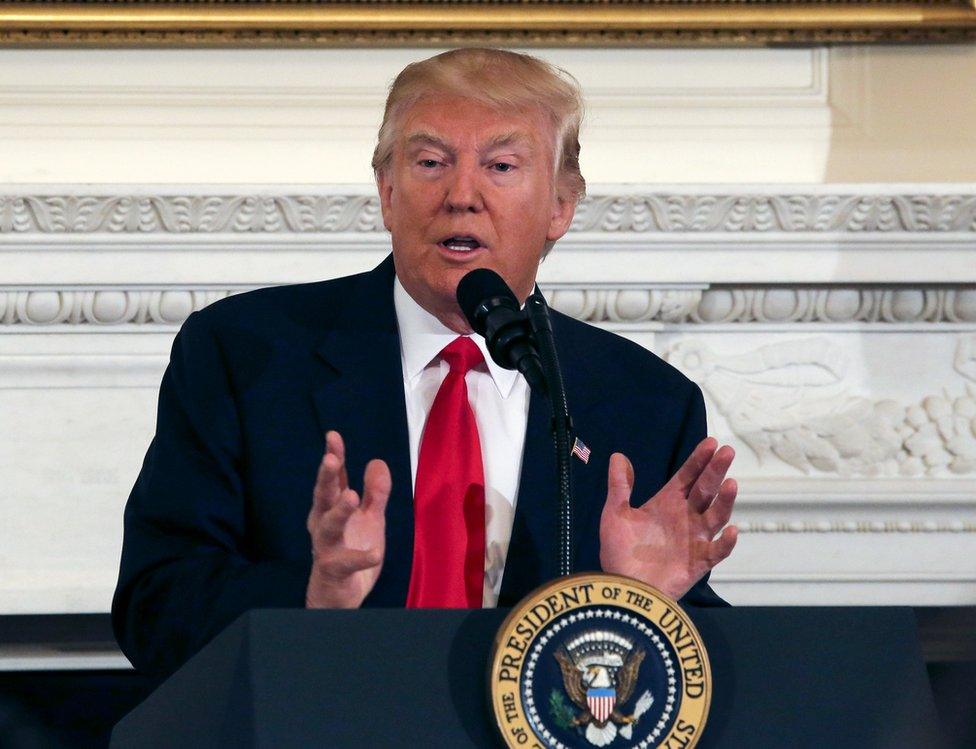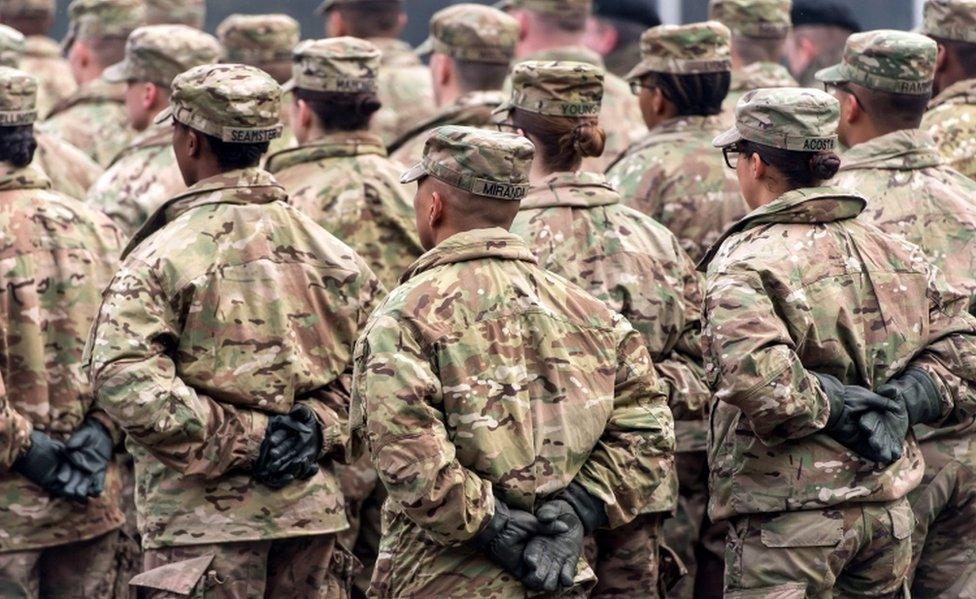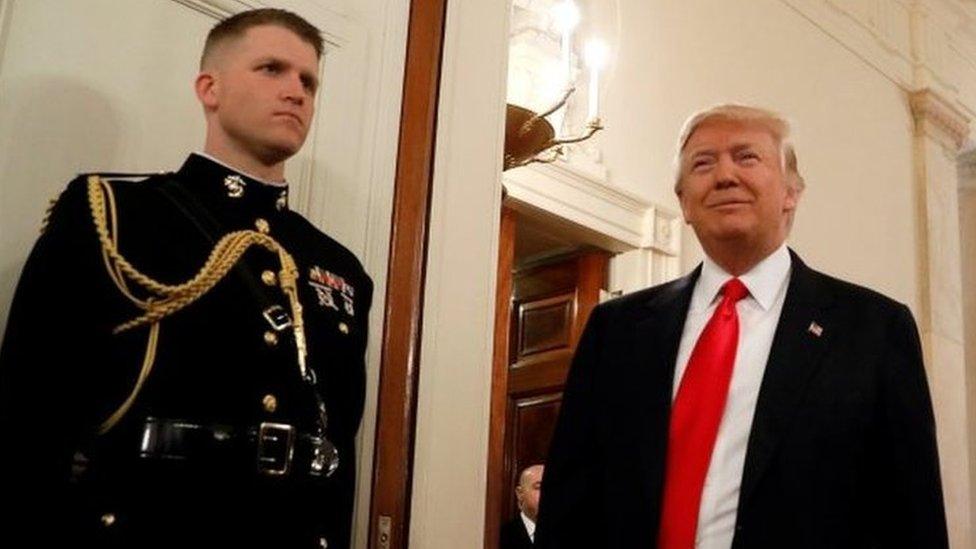Analysis: How does the US military need strengthening?
- Published

Some Republicans say the $54bn defence boost the president has asked for is too low a figure
President Donald Trump has proposed a 10% increase in the defence budget for next year, an addition of some $54bn (£43bn).
This funding request is only the start of a budgetary process, but even at the outset the Trump figures are not quite what they seem. The outgoing Obama administration was also projecting an increase in defence spending in 2018 - up by about $35bn, so actually the Trump "increase" in dollar terms is some $19bn.
The Trump administration's numbers have already drawn criticism from leading law-makers on Capitol Hill. Senator John McCain, who chaired a bi-partisan panel on the re-building of the US military that reported in January, insists that the Trump Administration is not planning to spend enough.
"With a world on fire,", said Mr McCain, "America cannot secure peace through strength with just 3% more than President Obama's budget...We can and must do better."
He has argued for spending some $640bn on defence next year, in contrast to Mr Trump's $603bn, rising to a total of $800bn by 2022.
These are huge figures for a country whose defence budget already outstrips all of its main competitors. True, the US remains the only global military player. True, the world is changing - China and Russia are both proving more assertive in areas that they regard as being of key strategic concern. But the problems facing the US military also stem from fundamental technological changes, and a shift in what the US armed services might be expected to do.
The counter-insurgency wars in Afghanistan and Iraq that have dominated US military thinking over the past decade are not over. But one phase is winding down, even if Mr Trump's plans may see a stepped-up US role in the short-term against so-called Islamic state.
How US defence spending plan compares to allies and rivals.
These wars have shaped a generation of US officers. They have required painful lessons about counter-insurgency operations to be re-learnt. But they have also meant that skills and equipment for high-end warfare have in some cases atrophied. With a rising China and a more aggressive Russia, significant deficiencies are opening up in the US order of battle.
There are myriad examples. Stryker armoured vehicles equipped with 30mm cannons are being developed and tested and will be rushed to forward deployed US units in Europe, addressing the concern that current Russian equivalents carry a much greater punch than the existing US vehicles.
US generals have been hugely impressed with Russian artillery and electronic warfare capabilities displayed during the fighting in eastern Ukraine. In Iraq and Afghanistan, the US and its allies had near total dominance of the electronic spectrum and their forces are not as well-versed as they used to be in operating in a contested electronic environment.
The problems are evident for the US Navy and Air Force too. There have inevitably been periods when an aircraft carrier has not been available for deployment to the Middle East due to commitments in the Asia-Pacific region. And significant numbers of aircraft are temporarily out of service as they wait for either spare parts or a place in the long lines for maintenance.
Over and above all this, there is a growing realisation that US technical dominance is eroding. The so-called military revolution of the 1980s and 1990s - smart-weapons, precision guidance, unmanned systems - were all based on decades of US scientific and technical leadership. But no longer. US experts worry about China's advances in artificial intelligence. It all begs the question: can the US secure and maintain a lead in the key military technologies of the future?

US forces will now be challenged to step up their readiness for high-end warfare
And this is where the initial Trump spending plan really raises more questions than it answers. What is the Trump administration's strategy that the new recast US military will serve? Numbers are important - but they are only part of the story of military power. It is things like capability and readiness that matter. And how is this all tied together into a broader strategic vision?
The Trump defence spending boost will come at a cost. He wants to see the State Department's funding cut, including foreign aid spending. But many commentators - including former military men - have argued that this spending too is an integral part of maintaining order in an increasingly chaotic world. Diplomacy and military capability must go hand-in-hand. Again, the Trump administration appears to lack any real vision of how the multiple aspects of US power can work in concert.
- Published27 February 2017

- Published24 February 2017

- Published15 February 2017